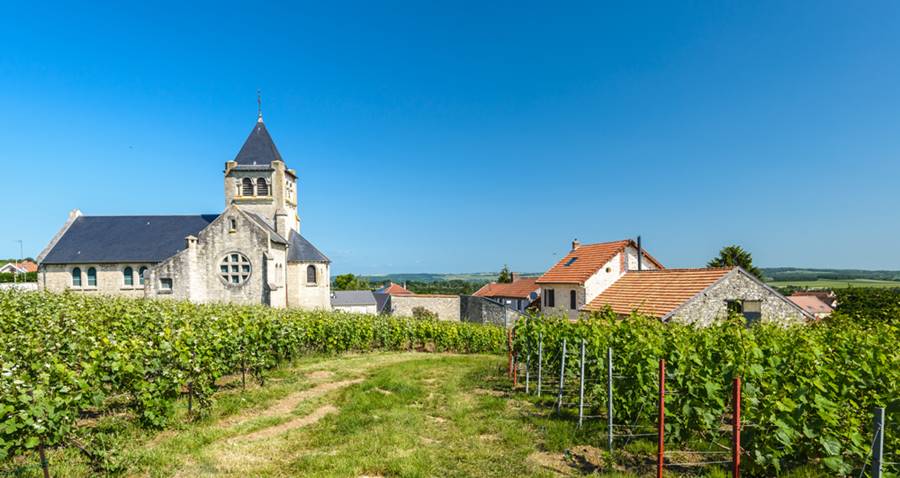10 Key Trends Reshaping the Champagne Industry
New Era for Champagne: Terroir, Sustainability, and Experimentation Take Center Stage
2024-06-05

2023 was a transformative year for Champagne, marked by significant adjustments and a return to a steady state after the pandemic-induced rollercoaster. As the world emerges from the shadows of Covid-19, Champagne has recalibrated itself to face new realities and opportunities. Here, we explore ten pivotal developments shaping the present and future of this iconic region, based on trends observed in 2023 and early 2024. This insight is gathered from Patrick Schmitt MW, editor-in-chief of The Drinks Business, supplemented by data from the Comité Champagne.
1. A Return to Stability
Champagne's market has stabilized to pre-pandemic levels, with shipment volumes hovering around 300 million bottles, according to the Comité Champagne. After the fluctuations of 2020 and the surge in 2021 and 2022, the region has found its footing again. However, bottle prices have climbed, maintaining higher levels than pre-Covid times even with the return of promotions. This means Champagne now carries a premium price tag.
2. Market Repositioning
The increase in prices has prompted many producers to pivot their strategies. More affordable labels have been phased out in favor of higher-value cuvées. This shift is particularly evident in France, where brands like Nicolas Feuillatte and Canard-Duchêne have discontinued their budget options. The focus is now on using more expensive grapes to craft premium cuvées, aligning their pricing strategies with market demands.
3. Expanding in the Arabian Peninsula
An emerging market for Champagne is the Arabian Peninsula, especially the United Arab Emirates (UAE). Despite strict alcohol regulations, more flexible policies in Dubai and Abu Dhabi are fostering growth in Champagne sales. Additionally, changes in Saudi Arabia's regulations could make it a significant market in the near future.
4. The Pinot Noir Renaissance
Pinot Noir is taking center stage in Champagne, with a growing production of blanc de noirs and single-vineyard expressions. This move towards showcasing terroir-specific characteristics mirrors the "Burgundization" trend, where the focus is on the unique qualities of individual vineyards, similar to practices in Burgundy.
5. Experimental Aging Techniques
Champagne producers are delving into innovative fermentation and aging methods. Some are experimenting with gold-plated barrels and egg-shaped oak containers. Others are aging Champagne underwater or using solera techniques to add complexity to their non-vintage cuvées. These methods are pushing the boundaries of traditional Champagne making.
6. Sustainable Viticulture
More producers are adopting sustainable viticulture practices, including organic and biodynamic farming. These practices not only benefit the environment but also result in higher quality grapes. Notable leaders in this movement include Louis Roederer and Telmont, who are setting the standard for sustainable winemaking in Champagne.
7. Diversifying Grape Varieties
In addition to Pinot Noir and Chardonnay, there is an increasing emphasis on less common varieties like Meunier, Petit Meslier, Arbane, and Pinot Blanc. These varieties are being replanted and incorporated into new blends, enhancing the diversity of Champagne offerings.
8. Eco-Friendly Packaging
The Champagne industry is striving to reduce its environmental impact by using lighter, recyclable bottles and phasing out gift boxes. However, the traditional foil on the bottle tops will remain, preserving this distinctive feature of Champagne.
9. Complex and Dry Cuvées
There is a noticeable trend towards producing more complex and dry cuvées, with a rise in brut nature expressions. This precision in winemaking allows for greater transparency and authenticity in Champagnes, with less added sugar highlighting the wine's true character.
10. Production of Still Wines
Champagne is increasing its production of still wines, particularly Pinot Noir, marketed as Coteaux Champenois. This development underscores the quality of the grapes and the region's potential to produce fine, full-bodied red wines that rival those from Burgundy.
Looking Ahead
According to Alexei Rosin, Managing Director of Moët Hennessy UK & Ireland, 2023 was a positive year for their brands, with strong demand and increased marketing investments. However, the cost-of-living crisis and high inflation have impacted consumption, suggesting a more stable future ahead.
The Comité Champagne's data reflect a return to pre-Covid shipment levels, with a total of 299 million bottles in 2023. However, the value remains close to the peaks of 2022 due to price increases.
Champagne continues to be a dynamic region, adapting to economic and climatic changes, innovating production techniques, and expanding into new markets. These efforts ensure its enduring relevance and prestige in the wine world, keeping Champagne at the forefront of the global wine industry.
Founded in 2007, Vinetur® is a registered trademark of VGSC S.L. with a long history in the wine industry.
VGSC, S.L. with VAT number B70255591 is a spanish company legally registered in the Commercial Register of the city of Santiago de Compostela, with registration number: Bulletin 181, Reference 356049 in Volume 13, Page 107, Section 6, Sheet 45028, Entry 2.
Email: [email protected]
Headquarters and offices located in Vilagarcia de Arousa, Spain.